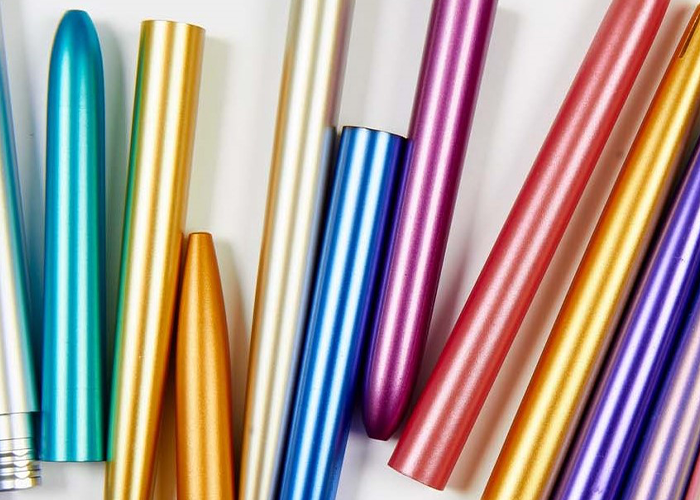Coatings and bonded coatings
Coatings and bonded coatings
PROTECTION AGAINST WEAR, FRICTION AND CORROSION
PTFE coatings and other plastic coatings improve the surface properties of components or protect them against external influences.
Coatings with solid lubricants serve as dry lubrication and therefore usually replace conventional lubricants such as grease or oil. They reduce friction forces on components during assembly or in dynamic use and protect the parts against assembly damage or heavy wear. Coloured coatings also identify small parts for subsequent quality control.
Coatings for elastomer parts are just as elastic as the base material and therefore adhere firmly to the component even when stretched.
Plastic coatings with special additives act as corrosion protection for metal parts. They form a continuous coating and shield the surfaces of the metals against corrosive gases or liquids.
BONDED COATING or PTFE COATING?
BONDED COATING or PTFE COATING?
In general language, different terms are commonly used for friction-reducing coatings.Manufacturers often speak of bonded coatings. Users, on the other hand, like to use terms such as PTFE coating, Teflon coating*, PU coating or polyurethane coating, plastic coating or simply the general term coating.
As a rule, the same thing is meant. They refer to coatings that are applied to the components in liquid form, cure there and form a dry, firmly adhering, possibly flexible functional layer.
The terms bonded coating, coating or plastic coating can be regarded as umbrella terms. However, terms such as PTFE, Teflon or PU coatings describe coatings with defined ingredients.
*Teflon™ is a trademark of The Chemours Company FC, LLC, formerly DuPont. The term Teflon is often used colloquially as a synonym for PTFE.
FUNCTION OF BONDED COATINGS
FUNCTION OF BONDED COATINGS
Bonded coatings are applied to the components in liquid form in various processes and cure there. They form a very thin, even, dry and usually elastic layer on the surfaces of the components. In contrast to oil, grease or powders, bonded coatings adhere firmly to the surfaces and fulfil their lubricating and protective function permanently for the most part. They can be used as the sole lubricant or in combination with oils or greases.WHY ARE COATINGS USED?
WHY ARE COATINGS USED?
Coatings mostly serve as an assembly aid or to optimise the sliding properties of components in dynamic applications. They are often applied to O-rings and other seals and protect the sealing elements from assembly damage or excessive abrasion. Coloured coatings identify the components and thus provide for reliable quality control. Coatings ensure that valves do not stick to the seals and prevent stick-slip effects, i.e. the jerky sliding of the elements. In this way, frictional forces can generally be reduced and noise caused by friction can be completely eliminated in some cases.WHAT IS COATED?
WHAT IS COATED?
Bonded coatings are used in various industrial applications. Depending on the coating and the objective, plastics (thermoplastics), elastomers or metals can be coated. The coatings are commonly used for O-rings and other seals, dampers, screws, springs, clamps, switches and other functional parts.Bonded and other coatings are mixtures of organic or inorganic binders, solid lubricants, solvents and various additives. The solid lubricants and additives differ depending on the objective:
COMPOSITION OF BONDED AND OTHER COATINGS
Binders
Bonded coatings are based on organic or inorganic binders. Different substances are used depending on the bonded coating, manufacturer and objective. The coatings can be based on epoxy resins, polysiloxane, polyurethane or other plastic compounds.
Solid lubricants
The best-known solid lubricant currently used in bonded coatings is PTFE. This is why PTFE coatings are often discussed, although there are certainly other functional coating systems. In addition to PTFE (polytetrafluoroethylene), molybdenum disulphide (MoS2), graphite or combinations of different solid lubricants are also used, for example.
Additives
Depending on the intended use, various functional additives are added to the bonded coatings. These can be corrosion inhibitors, UV indicators, colour pigments and other substances.
Solvents
Solvents of one kind or another are essential for the production and processing of coatings. Although there are still numerous bonded coatings based on volatile, organic solvents on the market, more and more water-based coatings are being manufactured, especially for elastomers and plastics. The principle of avoiding hazardous substances for the sake of environmental and health protection also applies to the production and processing of bonded coatings. For this reason, so-called NMP (N-methyl-2-pyrrolidone) co-solvents have been banned from bonded coatings in recent years.

AREAS OF APPLICATION AND VARIANTS
With increasing automation in production and assembly, functional coatings are being used ever more widely in industrial applications. They offer a clean solution for permanently lubricating stressed machine elements, especially elastomer parts, thereby increasing their service life and facilitating the assembly of small parts. If the bonded coatings are applied in automated batch processes, users can be sure that all components are coated.
Depending on the additives, there are coatings for the following areas of application and small parts, among others:
For use with food and drinking water, the relevant DVGW, NSF, FDA or Regulation (EC) 1935/2004 approvals are needed. The UV indicators often contained are not permitted in this case, and only those other colour pigments with the appropriate approval or conformity are permitted.
PWIS-compliant qualities are available, subject to appropriate base materials, PWIS-compliant coating systems and suitable coating and cleaning processes
